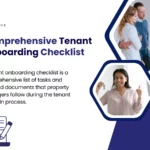Moving into a new rental property requires thorough preparation, and having a detailed move-in checklist ensures that the property is in the best condition before the tenant arrives. A well-structured checklist allows landlords to document the property’s condition, verify that all systems are functioning, and address any necessary repairs. This guide will walk you through each step of the move-in process, from conducting inspections and checking appliances to ensuring security features are in place, guaranteeing a smooth transition and preventing future disputes.
What is a Move-In Checklist?
A Move-In Checklist is a document used by landlords to assess and record the condition of a rental property before a new tenant takes possession. It includes a detailed inspection of the property, noting the state of rooms, appliances, fixtures, and other key areas. This checklist serves as an official record, ensuring that both the landlord and tenant agree on the property’s condition at the start of the tenancy.
The checklist typically covers aspects such as cleanliness, potential damage, functioning appliances, and security features. It’s an important tool for preventing future disputes over property damage and security deposit claims.
Why is a Move-In Checklist Important?
A Move-In Checklist is crucial for landlords as it helps ensure a smooth transition between tenants, protects the property, and avoids potential conflicts. It offers clear documentation of the property’s condition at the start of the tenancy, providing benefits for both landlords and tenants.Some of the reasons why having a checklist in place is important are:
- Prevents disputes over property damage
- Secures the return of the security deposit
- Creates a legal record of property condition
- Ensures accountability from tenants
- Helps in property maintenance planning
- Clarifies responsibilities for repairs and maintenance
- Ensures compliance with landlord-tenant laws
- Facilitates transparent communication
- Helps in resolving conflicts quickly and fairly
Key Components of a Landlord’s Move-In Checklist

The key components of a Move-In Checklist include property assessments that cover room conditions, damage identification, and appliance functionality, along with detailed documentation and photos to ensure transparency. Additionally, security checks to verify locks, alarms, and utilities such as water and electricity play a vital role in confirming the property’s readiness. These components create a solid framework to ensure the property is in good condition and protect both landlord and tenant.
Room-by-Room Inspection
A Room-by-Room Inspection is a crucial step in the move-in process. It ensures that every area of the property is thoroughly checked for damage, cleanliness, and functionality before the tenant moves in. This inspection helps landlords document the condition of each room, including walls, floors, and ceilings, so that any pre-existing issues are noted. It provides a clear record, preventing future disputes regarding the property’s condition.
- Ensure all windows and doors open, close, and lock properly.
- Test all light fixtures and ensure bulbs are functioning.
- Plug in a device to test electrical outlets for functionality.
- Open and close all cabinets and drawers to check for functionality.
- Look for signs of pests, such as droppings or damage.
- Verify that ventilation and air conditioning are working.
Condition of Appliances and Fixtures
The Condition of Appliances and Fixtures is a critical aspect of the move-in checklist. Landlords should thoroughly inspect all appliances and fixtures to ensure they are functioning properly and in good condition. This includes checking major appliances such as refrigerators, stoves, and dishwashers, as well as smaller items like faucets, light switches, and outlets. Any issues identified should be documented and resolved before the tenant moves in to avoid future disputes.
- Test all major appliances (e.g., stove, oven, refrigerator, microwave, dishwasher).
- Ensure all plumbing fixtures, including sinks and bathtubs, are in good condition.
- Confirm that the garbage disposal is functioning properly (if applicable).
- Test exhaust fans in kitchens and bathrooms for proper ventilation.
- Check the condition and functionality of light switches and dimmers.
- Inspect any additional appliances like washers, dryers, or built-in coffee makers for proper operation.
Walls, Floors, and Ceilings
The condition of Walls, Floors, and Ceilings is crucial when preparing a rental property for a new tenant. Landlords should inspect all surfaces for any damage such as cracks, stains, or holes. Any imperfections should be documented, and necessary repairs should be made before the tenant moves in. This inspection ensures the property is in good condition, providing a clean and welcoming environment for the new tenant.
- Inspect walls for cracks, holes, stains, or any visible damage.
- Check floors for scratches, dents, stains, or damage to carpets, tiles, or hardwood.
- Examine ceilings for water stains, cracks, or signs of mold.
- Ensure that all paint is intact and free from chipping or peeling.
- Look for any loose or damaged trim around doors, windows, or floors.
- Inspect corners and edges for any signs of wear or damage.
Documentation and Photos
Taking thorough documentation and photos is a crucial part of the move-in checklist. This step ensures that the condition of the property is clearly recorded before the tenant moves in. Photographs should be taken of each room, highlighting any existing damage or wear and tear. Detailed notes should accompany the photos, describing the condition of the property and noting any repairs or maintenance that need to be done. This documentation serves as a reference to resolve any disputes about the property’s condition at the end of the lease.
- Take clear photos of each room, including walls, floors, and ceilings, to document the property’s condition.
- Capture close-up images of any damage or wear (e.g., scratches, stains, cracks).
- Note specific areas that may require repairs or attention, including any pre-existing issues.
- Create a detailed list of items that need maintenance or replacement.
- Organize all photos and notes in a folder for easy reference.
- Ensure both landlord and tenant have access to the documented photos and notes.
Security Features Check
Verifying the Security Features of the property is essential to ensure tenant safety and compliance with local regulations. Landlords should inspect all security features, including locks on doors and windows, smoke detectors, carbon monoxide detectors, and alarm systems. Ensuring these features are fully functional before the tenant moves in promotes a safe living environment and helps avoid potential liability issues.
- Test all door and window locks to ensure they are secure and functional.
- Verify that smoke detectors are in working order and replace batteries if necessary.
- Ensure carbon monoxide detectors are installed and operational.
- Check that security alarm systems (if applicable) are functional and accessible.
- Inspect outdoor lighting to ensure proper illumination around entryways.
- Confirm that peepholes or security cameras (if provided) are in place and functioning.
Utilities and HVAC Systems
Ensuring that Utilities and HVAC Systems are in proper working order is a crucial part of the move-in checklist. Landlords should verify that all utilities, such as water, gas, and electricity, are functioning properly. Additionally, the heating, ventilation, and air conditioning (HVAC) systems should be checked for efficiency and safety. This step ensures the tenant has access to essential services and a comfortable living environment.
- Verify that all water faucets are functioning properly, with good water pressure.
- Ensure the water heater is providing hot water and is free from leaks.
- Confirm the gas appliances (e.g., stove, water heater) are operational.
- Test the thermostat to ensure it controls the heating and cooling systems correctly.
- Inspect HVAC air filters and replace them if necessary to ensure proper airflow.
- Ensure all ventilation ducts are unobstructed and functioning.
Pest Control Inspection
A Pest Control Inspection is essential to ensure the property is free from infestations that could impact tenant health and satisfaction. Before the tenant moves in, landlords should check for signs of common pests like rodents, insects, or termites. Ensuring that the property is pest-free helps create a healthy living environment and prevents potential damage to the property. If any issues are detected, pest control measures should be taken promptly.
- Look for signs of rodents, such as droppings or chewed materials.
- Inspect for visible signs of insects (e.g., ants, cockroaches) in common areas.
- Check for termite damage, such as hollowed wood or mud tubes.
- Inspect cracks, crevices, and door/window seals where pests might enter.
- Confirm that all pest control measures (e.g., traps, treatments) are in place.
- Look for evidence of previous pest control treatments or infestations.
Exterior Condition
The Exterior Condition of the property plays a significant role in maintaining its value and curb appeal. Landlords should inspect the exterior for any damage, wear and tear, or signs of neglect that could affect the property’s longevity or tenant satisfaction. This includes checking the roof, foundation, walls, windows, and doors for any visible issues. Addressing these concerns before the tenant moves in ensures a safe, secure, and aesthetically pleasing environment.
- Inspect the roof for missing shingles, leaks, or visible damage.
- Check the foundation for cracks, settling, or other structural issues.
- Examine exterior walls for signs of damage, cracks, or mold.
- Inspect windows and doors for any damage or difficulty in opening and closing.
- Ensure gutters and downspouts are clean and functioning properly.
- Look for any hazards such as uneven sidewalks, loose steps, or damaged fencing.
Tenant and Landlord Signatures
Having both Tenant and Landlord Signatures on the move-in checklist is crucial for confirming mutual agreement on the property’s condition. Both parties should review the checklist together, ensuring that any pre-existing damages or issues are documented. Once agreed upon, both the landlord and tenant should sign the checklist. This legally binding agreement serves as an important reference in case of disputes when the tenant moves out.
- Ensure that both the landlord and tenant sign the lease agreement in the designated areas.
- Verify that signatures are dated correctly.
- Provide a copy of the signed lease agreement to both the landlord and tenant for their records.
- Confirm that both parties understand their rights and responsibilities outlined in the lease.
- Ensure that both parties sign any necessary addendums or special agreements related to the lease.
- Confirm that the tenant has provided all necessary identification or documents required before signing.
Cleaning and Maintenance
Cleaning and Maintenance are essential steps to ensure the property is in optimal condition before the tenant moves in. Landlords should thoroughly clean all areas of the property, including carpets, windows, bathrooms, kitchens, and common areas. Additionally, routine maintenance tasks, such as replacing air filters, checking plumbing systems, and ensuring that all appliances are in working order, should be completed. Proper cleaning and maintenance not only enhance tenant satisfaction but also protect the landlord’s investment by reducing future repair costs.
- Deep clean the kitchen, including wiping down cabinets and countertops.
- Sanitize all bathroom fixtures, including mirrors, sinks, and faucets.
- Clean and disinfect high-touch surfaces like light switches, doorknobs, and handles.
- Ensure that all air conditioning and heating vents are free from dust.
- Inspect and clean any exterior areas like patios or balconies.
- Check for any clogged drains or issues with the plumbing and address them.
How Can a Property Management Company Simplify the Move-In Checklist Process?
A Property Management Company simplifies the move-in checklist process by handling all aspects of property preparation. They conduct thorough inspections, manage repairs, and ensure that the property is clean and ready for the tenant. With experienced professionals in place, these companies ensure every item on the checklist is addressed efficiently and effectively, leaving landlords with peace of mind.
Choosing the right property management company is key to ensuring this process runs smoothly. A reputable company will have a proven track record of managing move-ins, ensuring compliance with local laws, and providing detailed documentation. By selecting a qualified property management company, landlords can save time and avoid costly mistakes, knowing their property is in capable hands.







